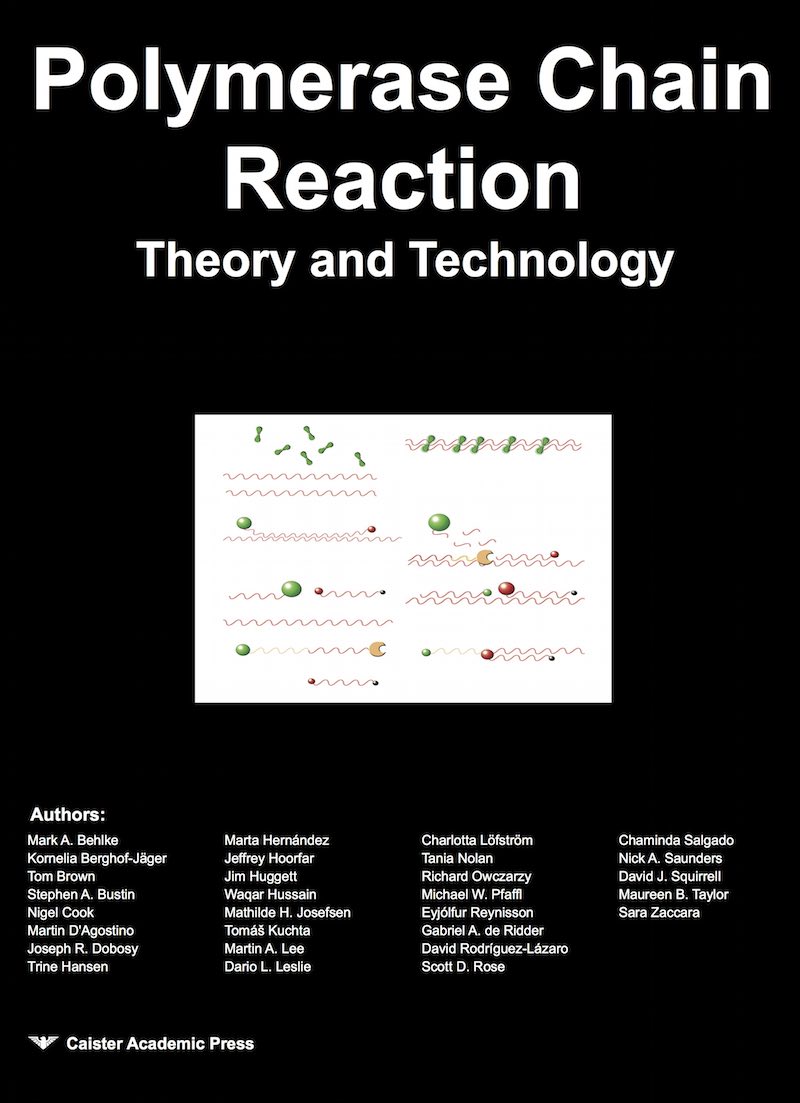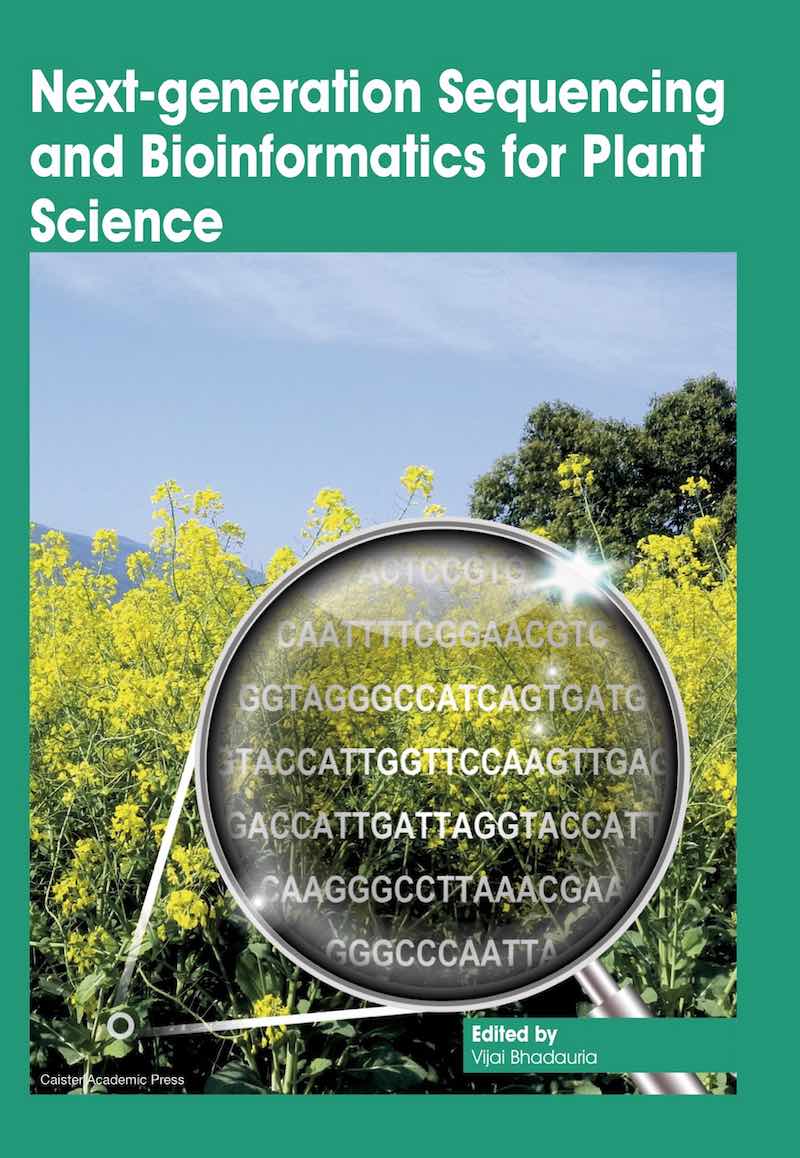PCR Troubleshooting
PCR Troubleshooting: The Template DNA
The DNA in a PCR reaction comprises two types:- the target sequence to be amplified
- the non-target DNA (also called the "burden" DNA
Problems also occur when the ratio of the target DNA to the burden DNA is very low, for example the amplification of a 500 bp fragment from the human genome (1 to 6 x 106). A better ratio is between 1:1 and 1:1 x 104. A ratio of 1:1 is achieved in a reamplification reaction and a ratio of about 104 is achieved when amplifying from the Escherichia coli genome.
When the total amount of the DNA in a PCR reaction is extremely small, there is an increased likelihood of its loss owing to any conceivable cause (clotting, adsorption, chemical or enzymatic degradation). Furthermore, a small amount of target DNA leads to an increased risk from contaminating DNA from impurities on anything that can come into contact with the DNA solution. In this respect, both the DNA diluent, the dust floating in the air, exhalations and even particles of skin or hair from your body should not be disregarded, as these can carry both the DNA and the DNA-degrading substances. Nucleases are probably as the major cause of DNA degradation in a PCR procedure. They are abundant on the surface of the human skin and can be present everywhere else too. Mild autoclaving of the DNA diluent and everything that comes in regular, occasional, or accidental contact with buffers and solutions will destroy both the nucleases and comtaminating DNA. If you suspect problems of this nature, wear gloves, a surgeon's cap, and a face mask. Also, wash the working space with an oxidizing substance such as (6% H202).
from PCR Troubleshooting: The Essential Guide see also PCR Troubleshooting and Optimization: The Essential Guide
PCR Troubleshooting: Inadequate dNTPs
An incorrect concentration of deoxynucleotidetriphosphates (dNTPs) can cause problems for the PCR procedure. The usual dNTP concentration is between 40μM and 200μM of EACH of the four dNTPs. Excessive dNTP concentrations can inhibit the PCR preventing the formation of product. However, concentrations up to 400 μM each dNTP have been reported to work adequately. Low primer, target, Taq, and dNTP concentrations are preferable as these generally ensure cleaner product and lower background. For longer PCR-fragments a higher deoxynucleotidetriphosphate concentration may be required. A large change in the dNTP concentration may require a corresponding change in the concentration of MgCl2.Suboptimal concentration of nucleotides can cause incomplete primer elongation or premature termination of DNA synthesis during the elongation step of the PCR cycle.
from PCR Troubleshooting: The Essential Guide see also PCR Troubleshooting and Optimization: The Essential Guide
PCR Troubleshooting: Primer Concentration
The recommended primer concentration for PCR is between 0.1μM and 1μM of each primer. The use of higher concentrations of primers can have the following effects:- If the primers are capable of forming dimers, raising their concentration only results in the creation of primer-dimers and does not improve the amplification of the desired PCR product. Primer-derived oligomers will possibly contaminate the reaction.
- If the primers do not form primer-dimers, it is likely that raising the primer concentration will lead to non-specific primer binding and the creation of spurious, undesirable PCR products.
However, to amplify short PCR target sequences, careful calculation of the optimum primer concentration is required. For example, if the target fragment length is 100bp, a greater number of PCR product molecules is required to provide a specified amount of amplified DNA (in nanograms) than for a larger target fragment. In order to generate the required number of PCR product molecules, a greater number of primers may be needed. Therefore, concentration of primers higher than 1μM may be necessary, and desirable, for short target sequences.
from PCR Troubleshooting: The Essential Guide see also PCR Troubleshooting and Optimization: The Essential Guide
PCR Troubleshooting: Taq Concentration
In a PCR experiment approximately 1 unit of the Taq enzyme should be used for a 25μl reaction. Suboptimal concentration of the Taq enzyme can cause incomplete primer elongation or premature termination of the PCR product synthesis during the elongation step of a PCR cycle.Too much Taq will result in an excessive background of unwanted DNA fragments (a smear on a gel) while a huge excess may cause the reaction to fail with no product being detected. A Taq concentration of 1 unit per 25μl reaction ensures a cleaner product and lower background.
from PCR Troubleshooting: The Essential Guide see also PCR Troubleshooting and Optimization: The Essential Guide
PCR Troubleshooting: Mg Concentration
Magnesium is a required cofactor for thermostable DNA polymerases. Mg2+ in the PCR mixture stabilizes dsDNA and raises the Tm. Mg2+ concentration therefore is an important for controlling the specificity of the reaction. A low Mg2+ concentration requires more stringent base pairing in the annealing step. Too few Mg2+ ions result in a low yield of PCR product; too many Mg2+ ions increase the yield of non-specific products and promote misincorporation.Insufficient Mg2+ concentration in a PCR mixture can causes failure of the reaction. Excess magnesium (or the presence of manganese) will cause the fidelity of DNA polymerases to be reduced and may cause the generation of unwanted products. On a gel this can appear as a ladder or smear. The MgCl2 concentration should normally be between 1mM and 4mM. Since dNTPs sequester Mg2+ ions, a major change in the dNTP concentration in a rection would require a change in the concentration of MgCl2. Similarly, changing the KCl-based buffer concentration or any other component of the PCR mix may require adjustment of the Mg2+ concentration in the reaction mixture.
from PCR Troubleshooting: The Essential Guide see also PCR Troubleshooting and Optimization: The Essential Guide
PCR Troubleshooting: KCl Concentration
Potassium chloride (KCl) is normally used in a PCR amplification at a final concentration of 50mM. To improve the PCR amplification of DNA fragments, especially fragments in the size range 100bp to 1000bp, a KCl concentration of between 70mM and 100mM is sometimes recommended. For the amplification of longer products a lower salt concentration appears to be better. But the PCR amplification of short products works better at higher salt concentrations. This is probably because an increase in salt concentration permits shorter DNA molecules to denature preferentially to longer DNA molecules. Shorter molecules are therefore amplified better at higher salt concentration. It should be remembered however that a salt concentration above 50mM can inhibit the Taq polymerase.If you are finding unwanted, long, non-specific products an increase in KCl concentration may reduce the appearance of these products. Similarly, to get rid of short, non-specific products you can decrease the KCl concentration to about 35 or 40mM. In either case do not change the MgCl2 concentration. To improve the yield of a product you can try adjusting the KCl concentration: increase it for a desired product less than 1000bp; lower it for a desired product greater than 1000bp.
Further reading:
- PCR Books
- PCR Troubleshooting and Optimization: The Essential Guide
- Real-Time PCR: Current Technology and Applications
- Real-Time PCR in Microbiology: From Diagnosis to Characterization
- PCR Troubleshooting: The Essential Guide
Further reading
- Real-Time PCR: Advanced Technologies and Applications
- Real-Time PCR in Food Science: Current Technology and Applications
- Quantitative Real-time PCR in Applied Microbiology



